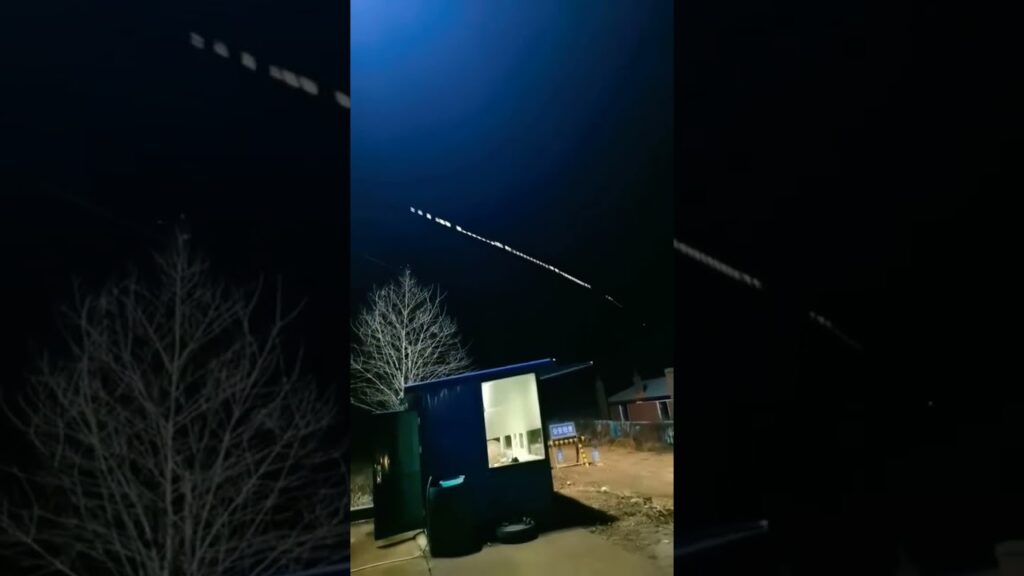The first week of September 2025 was buzzing with space updates—from SpaceX’s Starlink blitz marking a historic booster milestone, to Israel’s hush-hush spy satellite launch that startled civilians, and even a fresh push that helped the International Space Station (ISS) climb higher into orbit. It was a dramatic reminder that outer space is not just about science fiction anymore—it is an everyday theatre of innovation, politics, and global collaboration.
Table of Contents

SpaceX Pushes Reuse Limits While ISS Gets a Boost
SpaceX remains at the centre of modern spaceflight, and its Starlink programme once again stole the headlines. On 5 September, the company carried out its 111th orbital launch of the year, pushing another batch of Starlink satellites into low Earth orbit. But the real story was the booster: B1069, already a veteran with 27 flights, touched down successfully. That landing marked the company’s 500th booster recovery—a feat unimaginable a decade ago.
For Nigeria and other nations observing from afar, this milestone is not only about Elon Musk’s business empire; it signals how reusable rocketry is fast lowering the cost of global satellite internet, including access to Starlink services in underserved regions. Affordable satellite broadband has already begun to reach remote communities from Maiduguri to Makurdi, showing why each of these launches matters on the ground.
Beyond Starlink’s broadband dreams, SpaceX also supported NASA in an unprecedented way. On 3 September, its Dragon cargo spacecraft used thrusters on its trunk to reboost the ISS by about one mile. This new approach gives NASA more flexibility and reduces dependence on Russian Progress vehicles, which for decades were the main way to push the station higher. According to agency engineers, this technique will become routine, making ISS operations leaner and more independent well into 2025.
Spy Satellite Shock and the March of Solar Science
While SpaceX was celebrating, Israel quietly tested its own space muscle. On 2 September, the Ofek-19 spy satellite rode a Shavit rocket into orbit. The hush surrounding the launch triggered panic, with residents mistaking the ascending trail for a missile strike. Only hours later did officials clarify it was a satellite, highlighting how secrecy can sometimes unsettle the public. In reality, Ofek-19 strengthens Israel’s orbital surveillance network—part of a wider global trend of nations racing for eyes in the sky.
Meanwhile, American agencies are preparing for a scientific triple-play. On 23 September, a Falcon 9 is set to launch NASA’s IMAP mission to study solar wind, NOAA’s SWFO-L1 space weather sentinel, and a third payload imaging Earth’s exosphere. Together, these spacecraft will act as a solar “early warning system,” vital as our Sun approaches its stormy activity peak in 2025. Stronger forecasting will protect satellites, aviation, and even power grids in Africa, where geomagnetic storms have in the past knocked out communications.

Global Launch Rush and Sustainable Space Tools
China was particularly active this week, pulling off three launches in just two days. Its state-run Long March rockets lofted broadband and test satellites, while the private firm Galactic Energy continued its Ceres-1 missions. These launches underline Beijing’s push for its own megaconstellation to rival Starlink.
On the sustainability front, Europe is exploring ways to clean up the mess in orbit. ESA awarded a Spanish startup, PERSEI Space, the chance to test an electrodynamic tether system that can drag dead satellites back into the atmosphere without fuel. Another project out of the U.S. is trialling “smart skin” sensors that can detect micrometeoroid and debris impacts in real time, a tool that could save future spacecraft from catastrophic strikes.
And the future is not just near-Earth. Blue Origin is preparing for a New Glenn rocket launch on 29 September to carry NASA’s ESCAPADE mission toward Mars. This flight is a high-stakes test: if Blue Origin can land and reuse the gigantic booster, it will finally join SpaceX in the elite club of orbital rocket recovery. Rocket Lab and Australia’s Gilmour Space are also pushing their own heavy-lift vehicles, proving that global competition is only just warming up.
Stellar Science, Lunar Dreams, and What Comes Next
Back in the realm of discovery, the James Webb Space Telescope dazzled astronomers with fresh images of the Lobster Nebula (NGC 6357), revealing thousands of infant stars in rich detail. NASA’s Juno probe also made history by confirming the elusive auroral “footprint” of Callisto, one of Jupiter’s major moons. Meanwhile, comet 3I/ATLAS, the third-ever identified interstellar visitor, has begun developing a tail—sparking curiosity about what secrets it might carry from beyond our solar system.
On the policy side, the race to the Moon is heating up. NASA still insists Artemis III will land humans near the lunar south pole in 2025. In India, Prime Minister Narendra Modi announced plans for a Chandrayaan-5 rover mission in collaboration with Japan by 2028, with even bolder ambitions: a human lunar landing by 2040 and a permanent lunar base by 2047. Canada unveiled a prototype rover for its own mission in 2029, while the U.S. Space Force trained its first group of space-warfare officers. The geopolitical stakes are clear: the Moon and cislunar space are now arenas of both cooperation and competition.

Conclusion: A World Transformed by Space
The headlines of 5–6 September prove that space is no longer a sideshow. A Starlink blitz can shift global internet access, a spy satellite launch can unsettle communities, and a fresh ISS boost can redefine station independence. Each of these moments adds up to a picture of a rapidly changing space age—one defined by commercial scale, scientific curiosity, and geopolitical ambition.
For Nigerians and Africans alike, the relevance is growing daily. Satellite constellations like Starlink mean farmers can track weather patterns in real time, students in rural classrooms can connect to global knowledge, and businesses can compete online regardless of geography. At the same time, spy satellites, space weather, and debris threats remind us that outer space is tightly woven into national security and everyday resilience.
As we look ahead to upcoming launches—be it Blue Origin’s Mars-bound mission, ESA’s debris-cleaning demo, or the next Starlink batch—the key lesson is simple: the cosmos will not slow down for anyone. Humanity is already deep into its next chapter beyond Earth, and the choices made now will define how inclusive, sustainable, and peaceful that frontier becomes.
Join Our Social Media Channels:
WhatsApp: NaijaEyes
Facebook: NaijaEyes
Twitter: NaijaEyes
Instagram: NaijaEyes
TikTok: NaijaEyes
















![Tiwa Savage Slams ‘Unfair’ Exclusion of Tems from Afrobeats Big 3 Ranking [VIDEO] Tiwa Savage](https://naijaeyesblog.com/wp-content/uploads/2025/09/Tiwa-Savage-tems-180x135.avif)























